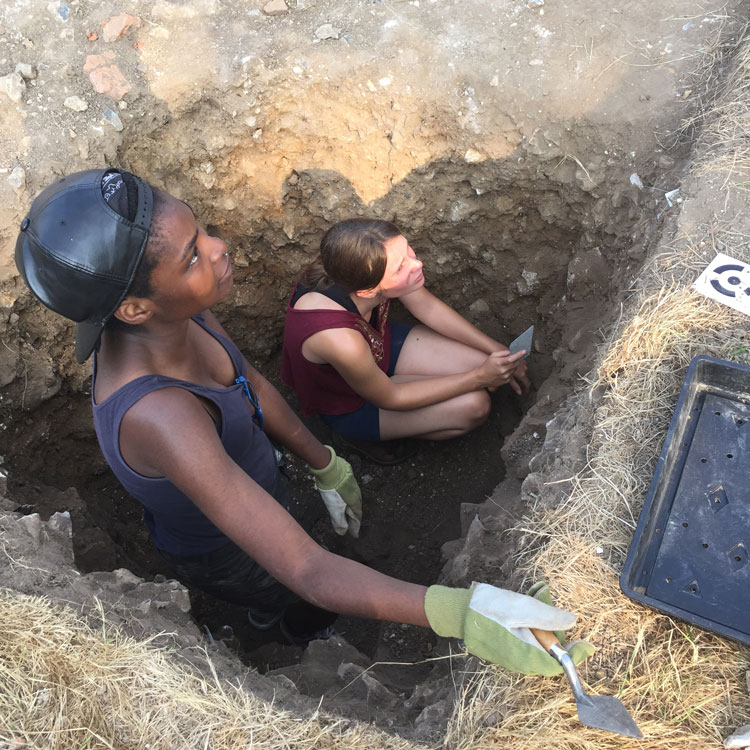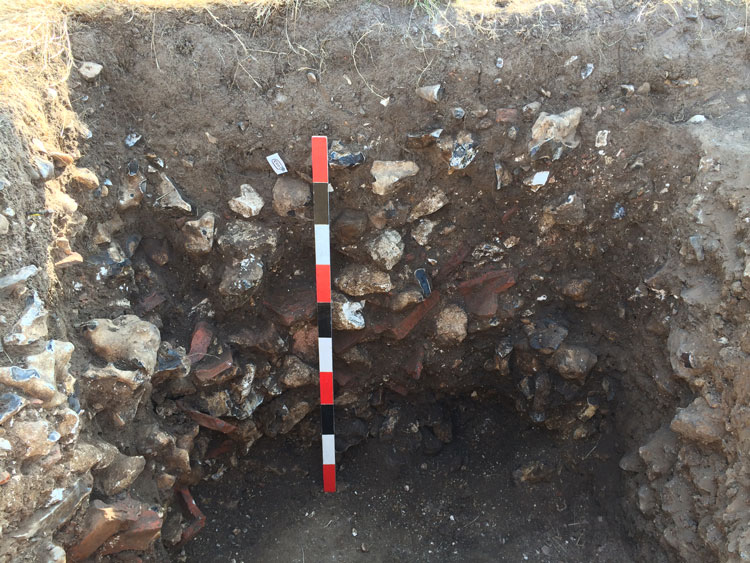Jonathan writes: This is my second University of Kent training dig; I went with Steve Willis to Lincolnshire last September, and through this summer I have also been working as a volunteer at a site near Tonbridge with University of Kent Archaeology graduates Eric Hall and Tony Palmer; both are very experienced excavators.
I have been chewing and researching on the evidence emerging at our site on the Nailbourne. Our buildings show status through finds of window and vessel glass and fine ware pottery, but the buildings do seem, as Elizabeth said, deliberately and carefully dismantled and materials taken away and we are seeing late 4th century dateable material. My question is where did the stuff go!? It was so carefully removed, even the floors. Why and where? The villa at Abbey Farm, Minster, dug by the Kent Archaeological Society and The Trust for Thanet Archaeology was likewise vacated, and according to Keith Parfitt probably relocated on Thanet but at an earlier date than ours. Did the occupiers of our villa set up elsewhere?
I was wondering if the large amount of black pottery actually has it source in Poole, an area that also had strong trade links with Gaul. Some may be Black Burnished Ware.
There was, some have said, a mass exodus at this time from Britain to Gaul as threats from raiding Franks and Saxons grew. A family of means could relocate and maybe they had their valuable home dismantled and re erected there. They obviously had status from the finds we have had of fine pottery and glass ware and from the massive scale of the buildings.
Trench B, the area I was working on with Lacey, looked to me like they had used it as a working area, carefully removing the best materials, the stone, plaster and maybe tiles, leaving only the debris of their work.







